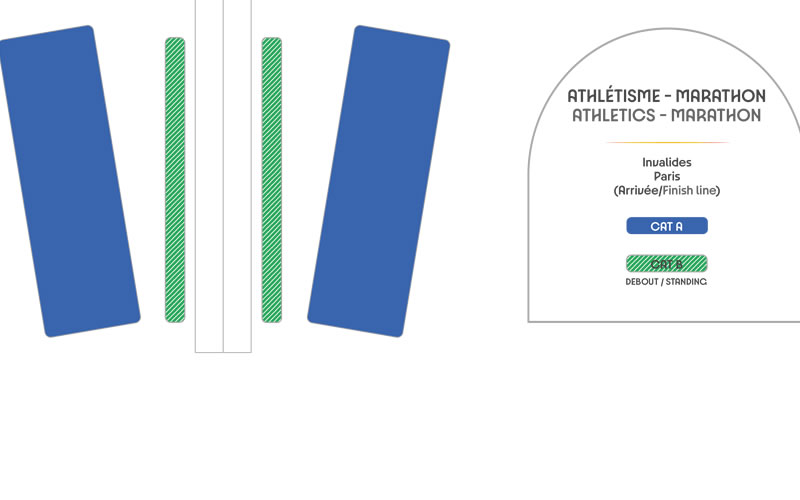ATM01 - Summer Olympics - Paris Olympic 2024 Athletics Marathon Tickets

Invalides - Athletics Marathon
Olympic Athletics Marathon
The Olympic Athletics Marathon is one of the most iconic and historic events in the Olympic Games, symbolizing endurance, determination, and the human spirit’s capacity to overcome physical and mental challenges. Rooted in ancient Greek history, the marathon commemorates the legendary run of the messenger Pheidippides from the Battle of Marathon to Athens, a feat of stamina and speed that inspired the race’s inclusion in the modern Olympics since 1896.
The marathon covers a distance of 42.195 kilometers (26.2 miles), making it the longest standard race in Olympic athletics. It is held on a road course that often weaves through the host city’s streets, offering a unique showcase of local landmarks and culture alongside the athletes’ grueling journey. The race tests every aspect of a runner’s endurance, strategy, and mental toughness, as competitors must pace themselves carefully to avoid exhaustion and maintain their strength over several hours.
Men’s and women’s marathon events are both featured in the Olympic program. The women’s marathon was introduced in 1984, marking a significant milestone in gender equality in athletics and inspiring generations of female long-distance runners worldwide.
Olympic marathon champions join an elite group of athletes celebrated not only for their speed but for their resilience and tactical savvy. Legendary figures such as Abebe Bikila, who won the 1960 Rome marathon running barefoot and became the first Black African Olympic champion; Joan Benoit Samuelson, the first Olympic women’s marathon gold medalist; and Eliud Kipchoge, who is widely regarded as one of the greatest marathon runners ever, have all left an indelible mark on the event.
The marathon’s unpredictable nature—affected by weather, course layout, and race-day conditions—adds to its drama and allure. It is not uncommon to see athletes make remarkable comebacks or heartbreaking collapses, reminding spectators of the race’s immense difficulty.
More than just a competition, the Olympic marathon embodies the universal human journey of perseverance, dedication, and triumph over adversity. It remains a highlight of the Summer Games and a timeless celebration of endurance that captures the imagination of fans around the world.
